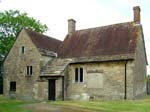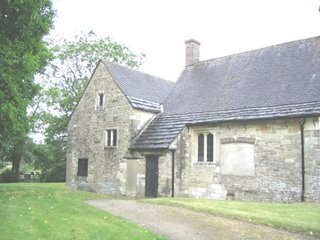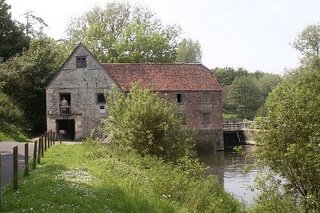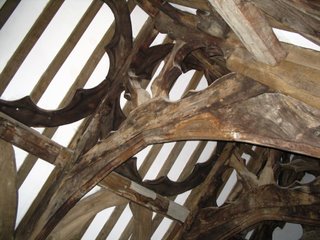
The nice thing about wandering England, especially when you come from there, is that you can stumble on places that are humble yet somehow beautiful. And those are the places that seem to come alive for me. Probably because I was never ever going to be one of those nobles I love to write about. I was definitely the abigail or the seemstress. You know one of the workerbees.
Dorset, Hardy Country of Tess of the D'Urbeville's fame, is particularly rich in unexpected antiquities. Probably because it is still very rural and as a county, absolutely beautiful. We will see some more of it in future blogs, but let me introduce you to Fiddleford Manor.

No lord would call his house Fiddleford I suspect. This house is fabulous. It dates from the 14th century and from the outside is less than imposing. Until you remember that in the 14th century many people lived in daub and wattle huts. Fiddleford (Fitela’s Ford) has no recorded history, but it was probably built by William Latimer, royal sheriff of Somerset and Dorset, about 1370. Latimer had acquired the Fiddleford estate by marrying the daughter of its previous owner, John Maury, in 1355. A mill at Fiddleford is mentioned as early as 1086. This is a picture of the mill as it is today.

Just for fun I should tell you that nearby is Piddles Wood. Don't you just love those old English names?
But it is the inside of this plain building that makes it so interesting.
Latimer’s private residence was contained in the two-storey cross-wing of the building. This, with its large chamber (solar) on the upper floor and two service rooms (buttery and pantry) below, formed a comfortable house. What you see here is the roof of the solar and a view of the room itself.

Here is a picture of one of the initials of 17th Century owners, a W for White

To it there was attached the great hall which Latimer’s duties as a royal official
made essential. These are some pictures I took of the great hall.



In the 14th century it was essential for a great man to entertain lavishly. The solar and great hall, with their elaborate roofs, represent just the kind of conspicuous expenditure that would be expected of someone who wished to establish himself as a man of authority and means.
And as always, I remind you that this house was lived in during the 19th century, probably though only in one of its later added wings. It was used 600 years ago and 200 years ago by the miller in the time of the Regent. I hope one day to be able to use it in one of my stories. My job will be to paint the above photos in words.
Next day we will continue with another interesting sight to be found in the Dorset countryside.
No comments:
Post a Comment